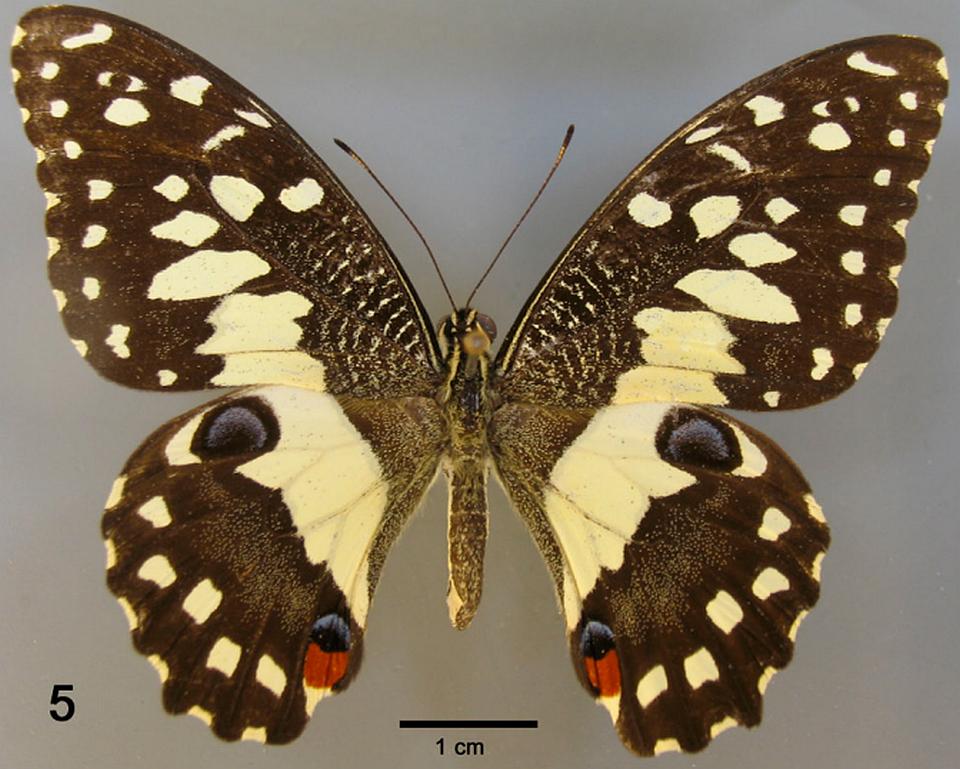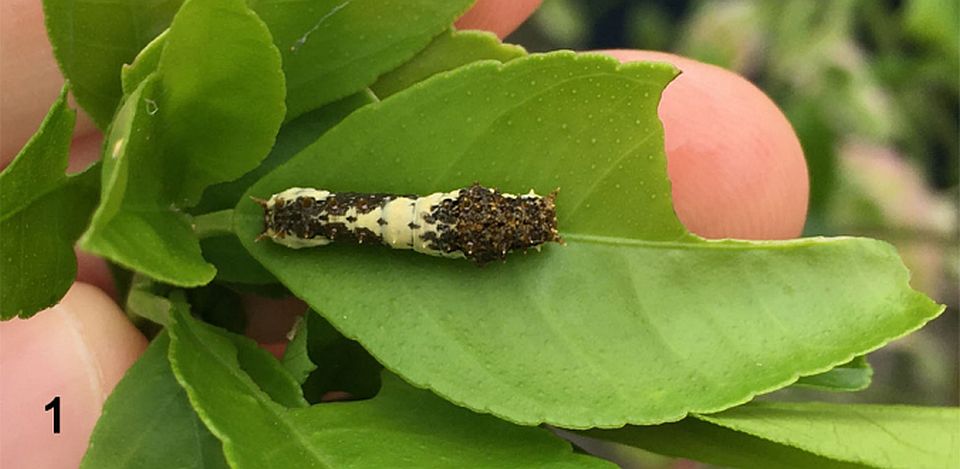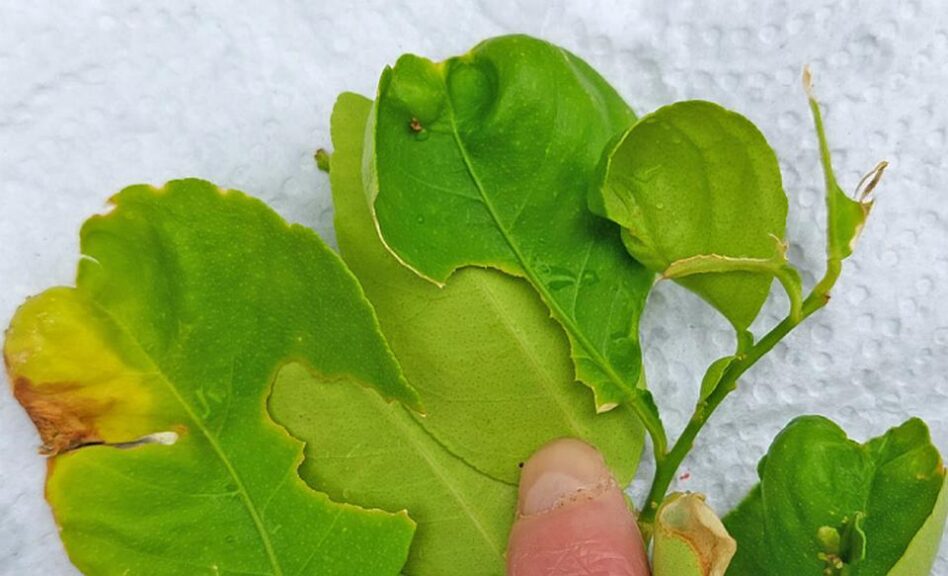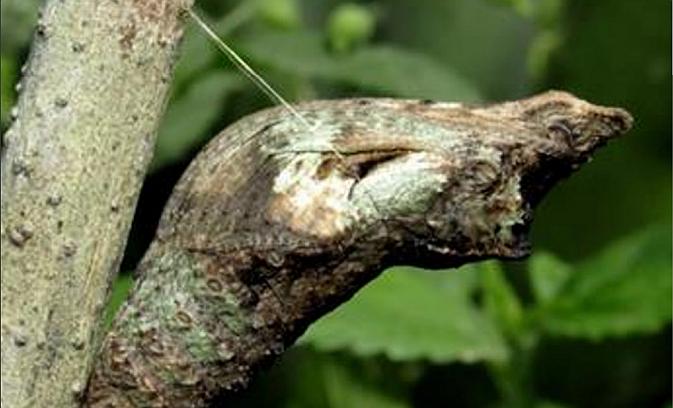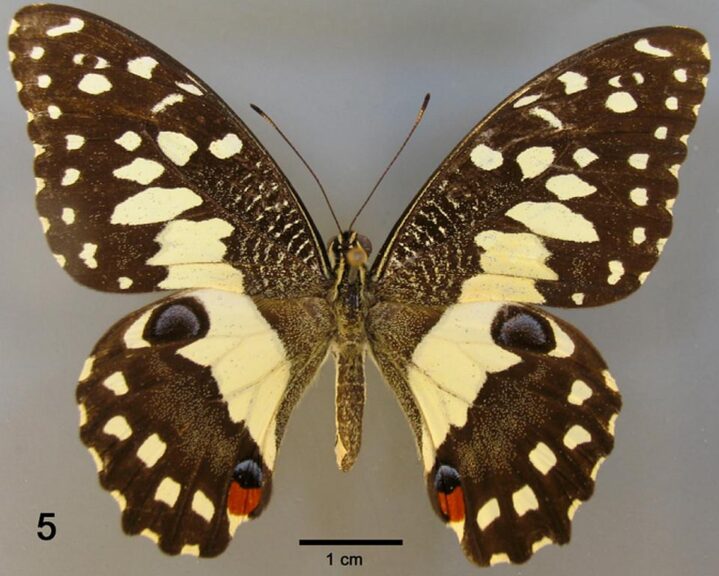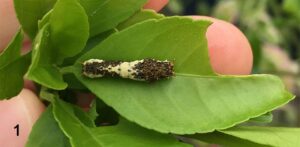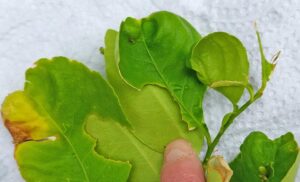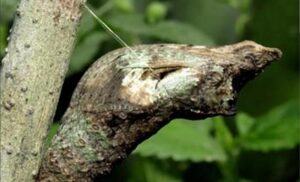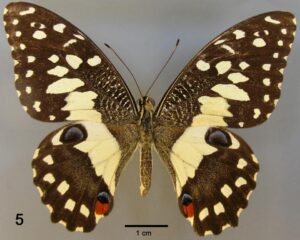Pest Alert! Lime Swallowtail Poses New Threat to Citrus in Florida
Florida citrus growers have more than enough to deal with when it comes to pest and disease pressure. Add another potential worry to the pile with arrival of the lime swallowtail. The invasive butterfly has been a bane to citrus in the Caribbean for some time. A recent discovery shows the pest has landed in the Sunshine State.
According to a recent pest alert from the Florida Department of Agriculture and Consumer Services’ Department of Plant Industry (DPI), photographs were posted online showing larvae of lime swallowtail (Papilio demoleus L.) on a citrus tree in Key West. DPI collected specimens from the site and confirmed them as P. demoleus malayanus Wallace, the subspecies invasive in the Caribbean.
The discovery was not a big surprise for DPI, however. The lime swallowtail has been established in the Greater Antilles since 2004. Its invasion of Florida has been anticipated.
A subsequent survey by DPI found more properties around Key West with immature stages of lime swallowtail on citrus trees.
The pest alert includes specs on the lime swallowtail. They include:
Identification
Eggs are 1 to 1.5 mm, white to yellow, spherical, and smooth. They are laid in groups of one to three near the edges of leaves. Young larvae are dark gray with white marks, resembling bird droppings with short spines. The final instar is 3 to 4 cm long and green with black and yellow bands across the thorax and abdomen. Pupae are rough and usually grayish brown, but pink or green forms occur. Adult butterflies have a black and yellow checkered pattern with a red hind-wing spot. Unlike most swallowtail butterflies, they do not have “tails” on the hind wings. The only stages that may be field-screened are the adult butterfly and the final-instar larva: a large, green papilionid caterpillar on citrus is probably this species. However, the eggs, pupae and younger dropping-mimic larvae resemble those of native butterflies, so they must be collected and submitted to DPI’s diagnostics bureau for determination.
Biology and Hosts
Hosts are almost exclusively Rutaceae. Larvae prefer citrus species and Atalantia buxifolia (boxthorn). Other hosts include species of Acronychia, Aegle, Chloroxylon, Clausena, Flindersia, Fortunella, Glycosmis, Limonia, Microcitrus, Micromelum, Murraya, Ruta, Toddalia, Triphasia and Zanthoxylum. In Cuba, it has been observed on citrus, limeberry (Triphasia trifolia), and boxthorn. Papilio demoleus is a strong flier and frequents urban habitats.
A female may lay more than 100 eggs under optimal conditions. Caterpillars chew out large, semicircular pieces of leaves. They prefer young growth.
Distribution
Papilio demoleus is native from the Middle East to southern China, with the subspecies P. d. malayanus native to mainland Southeast Asia. Its range has expanded into Indonesia and the Philippines following citrus cultivation. In the Caribbean region, it occurs in Cuba, Hispaniola, Puerto Rico, the Virgin Islands, Jamaica, and the Cayman Islands. In the Continental U.S., butterflies have been reported by the general public in California and Louisiana, but their status is uncertain.
Potential Economic Impact
Papilio demoleus is a key pest of citrus in Asia. It can defoliate seedlings and young trees, so its effect on nursery stock may be greater than on established groves.
For more information, visit fdacs.gov.




